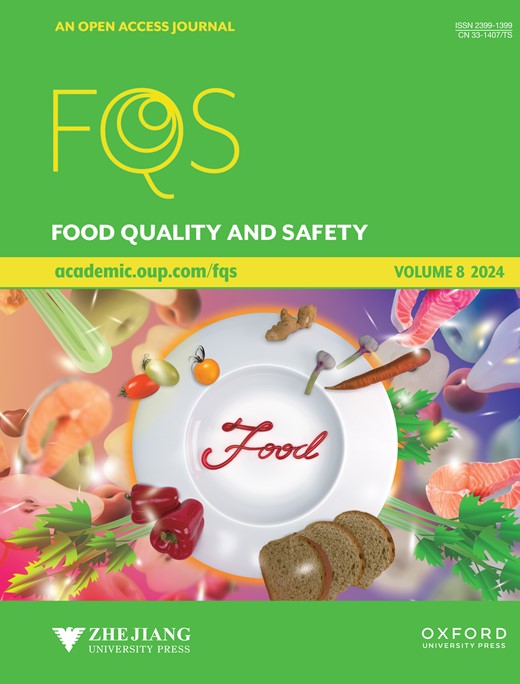Alteration of pectin metabolism in blood orange fruit (Citrus sinensis cv. Tarocco) in response to vesicle collapse
IF 4.4
3区 农林科学
Q2 FOOD SCIENCE & TECHNOLOGY
引用次数: 4
Abstract
Segment drying is a severe physiological disorder of citrus fruit, and vesicles become granulated or collapsed. Aside from the hypothesis that alteration of cell wall metabolism is the main factor of citrus granulation, little is known about vesicle collapse. This study aimed to elucidate the changes in pectin metabolism during vesicle collapse in blood orange. Vesicle collapse was characterized by decreased nutrients while increased chelate- and sodium carbonate-soluble pectin and calcium content. The nanostructure of chelate-soluble pectin got complex and developed multi-branching upon collapse. The activity of pectin methylesterase increased, while that of polygalacturonase and pectate lyase decreased upon collapse. Genome-wide transcriptional analysis revealed an increasing pattern of genes encoding pectin methylesterase and other enzymes involved in pectin synthesis and de-acetylation upon collapse. Drying vesicles were characterized by increased abscisic acid content and relevant gene expressions. In conclusion, we discovered alteration of pectin metabolism underlying citrus vesicle collapse, mainly promoting pectin demethylesterification, remodeling pectin structures, and further inhibiting pectin degradation, which was hypothesized to be a main factor for the citrus collapse. This is the first to disclose the potential intrinsic mechanism underlying vesicle collapse in orange fruit.血橙果实果胶代谢的变化。Tarocco)对囊泡塌陷的反应
节段干燥是柑橘类水果的一种严重的生理失调,使囊泡变成颗粒状或塌陷。除了细胞壁代谢的改变是柑桔肉芽形成的主要因素的假设外,对囊泡塌陷的了解甚少。本研究旨在阐明血橙囊泡崩塌过程中果胶代谢的变化。囊泡塌陷的特征是营养物质减少,而螯合物和碳酸钠可溶性果胶和钙含量增加。螯合可溶性果胶的纳米结构复杂,崩解后形成多分支结构。果胶甲基酯酶活性升高,聚半乳糖醛酸酶和果胶裂解酶活性降低。全基因组转录分析显示,编码果胶甲基酯酶和其他参与果胶合成和崩溃时去乙酰化的酶的基因增加。干燥囊泡的特征是脱落酸含量和相关基因表达增加。综上所述,我们发现果胶代谢的改变是导致柑橘囊泡塌陷的主要原因,主要是促进果胶去甲基化,重塑果胶结构,进而抑制果胶降解,这可能是导致柑橘囊泡塌陷的主要因素。这是首次揭示了橘子果实中囊泡塌陷的潜在内在机制。
本文章由计算机程序翻译,如有差异,请以英文原文为准。
求助全文
约1分钟内获得全文
求助全文
来源期刊

Food Quality and Safety
FOOD SCIENCE & TECHNOLOGY-
CiteScore
7.20
自引率
1.80%
发文量
31
审稿时长
5 weeks
期刊介绍:
Food quality and safety are the main targets of investigation in food production. Therefore, reliable paths to detect, identify, quantify, characterize and monitor quality and safety issues occurring in food are of great interest.
Food Quality and Safety is an open access, international, peer-reviewed journal providing a platform to highlight emerging and innovative science and technology in the agro-food field, publishing up-to-date research in the areas of food quality and safety, food nutrition and human health. It promotes food and health equity which will consequently promote public health and combat diseases.
The journal is an effective channel of communication between food scientists, nutritionists, public health professionals, food producers, food marketers, policy makers, governmental and non-governmental agencies, and others concerned with the food safety, nutrition and public health dimensions.
The journal accepts original research articles, review papers, technical reports, case studies, conference reports, and book reviews articles.
 求助内容:
求助内容: 应助结果提醒方式:
应助结果提醒方式:


